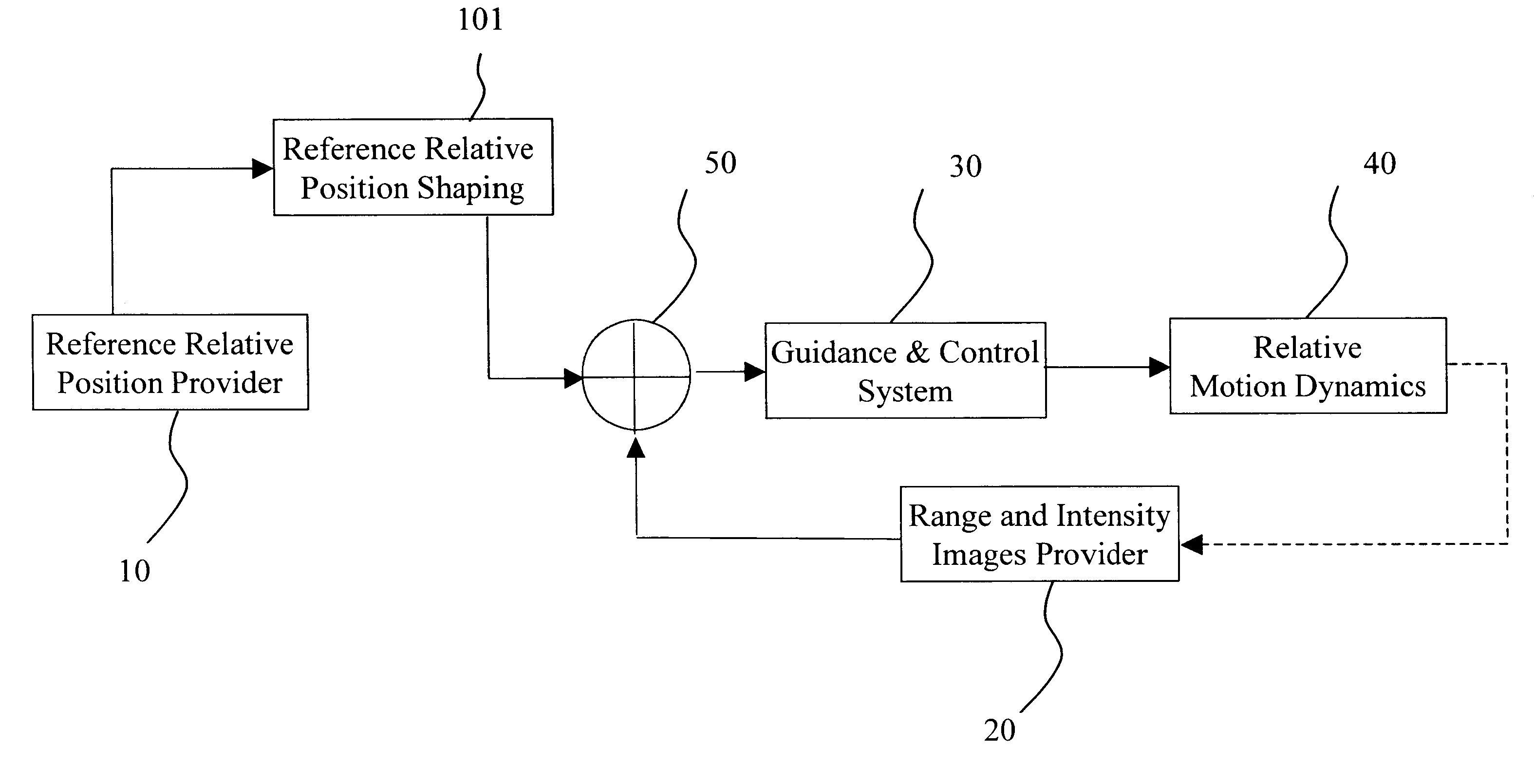Autonomous navigation, guidance and control using LDRI
a technology of autonomous navigation and guidance, applied in the field of ldri, can solve the problems of limited use of unique targets, unreliable current docking technologies, and inability to meet the needs of users,
- Summary
- Abstract
- Description
- Claims
- Application Information
AI Technical Summary
Benefits of technology
Problems solved by technology
Method used
Image
Examples
Embodiment Construction
The Laser Dynamic Range Imager (LDRI) developed by Sandia National Laboratories takes care of the illumination problem by using a continuous wave (CW) laser radar to illuminate the scene. The Laser Dynamic Range Imager also eliminates the necessity of using multiple cameras. Each pixel becomes a sensor, since the range is obtained from the phase shift between the incident and reflected laser beams coming from that pixel.
The LDRI generates intensity and range images from that the object motion information can be derived. Generally, an LDRI based range method is based on static LDRI image processing. The assumption is feasible due to the very low docking velocity (about 1 cm / s for low impact docking). To further improve the accuracy of the LDRI based range method, the motion effects will be taken into account by using optical flow analysis techniques.
When using LDRI for docking, the reference relative position is set to zero while LDRI coupled with real time image processing software ...
PUM
 Login to View More
Login to View More Abstract
Description
Claims
Application Information
 Login to View More
Login to View More - R&D
- Intellectual Property
- Life Sciences
- Materials
- Tech Scout
- Unparalleled Data Quality
- Higher Quality Content
- 60% Fewer Hallucinations
Browse by: Latest US Patents, China's latest patents, Technical Efficacy Thesaurus, Application Domain, Technology Topic, Popular Technical Reports.
© 2025 PatSnap. All rights reserved.Legal|Privacy policy|Modern Slavery Act Transparency Statement|Sitemap|About US| Contact US: help@patsnap.com



